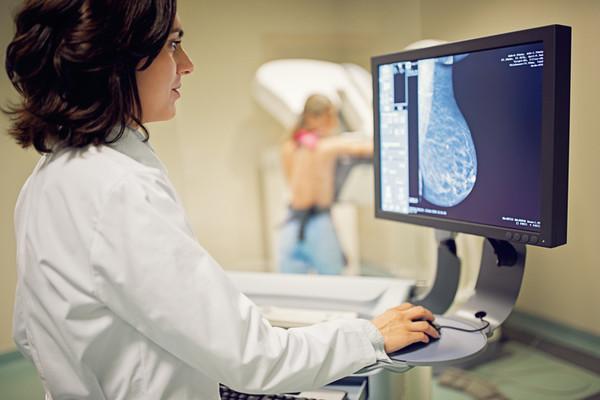Automated mammography is as effective as manual screening in detecting metastases in the axillary region of early-stage breast cancer, a study showed.
Seoul National University Bundang Hospital (SNUBH) released the results of the study, led by Professor Kim Sun-mi of the Department of Radiology, on the effectiveness of automated breast ultrasound in diagnosing metastases in early-stage breast cancer.

Automated mammography is an examination device designed to fit the breast's structure. It allows for a standardized examination by imaging the entire breast. Compared to manual mammography, it minimizes skill differences and saves time.
However, the equipment was limited to the armpit area and required an additional manual mammogram to detect metastases.
So, the researchers tested the feasibility of using automated mammography to diagnose breast cancer metastases in the axillary lymph nodes. They evaluated the diagnostic performance of automated and manual breast ultrasound in 377 patients with early-stage breast cancer for the detection of axillary lymph node metastases and severe metastases with more than three metastatic axillary lymph nodes.
In comparing mammography and biopsy results, automated mammography performed similarly to manual mammography in sensitivity and specificity. In predicting axillary lymph node metastases, automated screening had a sensitivity of 43.6 percent and a specificity of 95.1 percent. Those for manual screening were 41.6 percent and 95.1 percent.
For severe metastases, the automated test had a sensitivity of 70 percent and a specificity of 89.6 percent, similar to the manual test's 66.7 percent and 88.9 percent. The diagnostic performance agreement rate between the automated and manual tests was 95.9 percent.
“We hope that the results of this study will make automated mammography useful in diagnosing early breast cancer metastases,” Profess Kim said. “We recommend that patients with suspicious findings of metastases in the axillary region on automated mammography should consider biopsy and examine the entire axillary region with manual mammography.”
The study was published in the Korean Journal of Radiology, an international journal of the Korean Society of Radiology.

